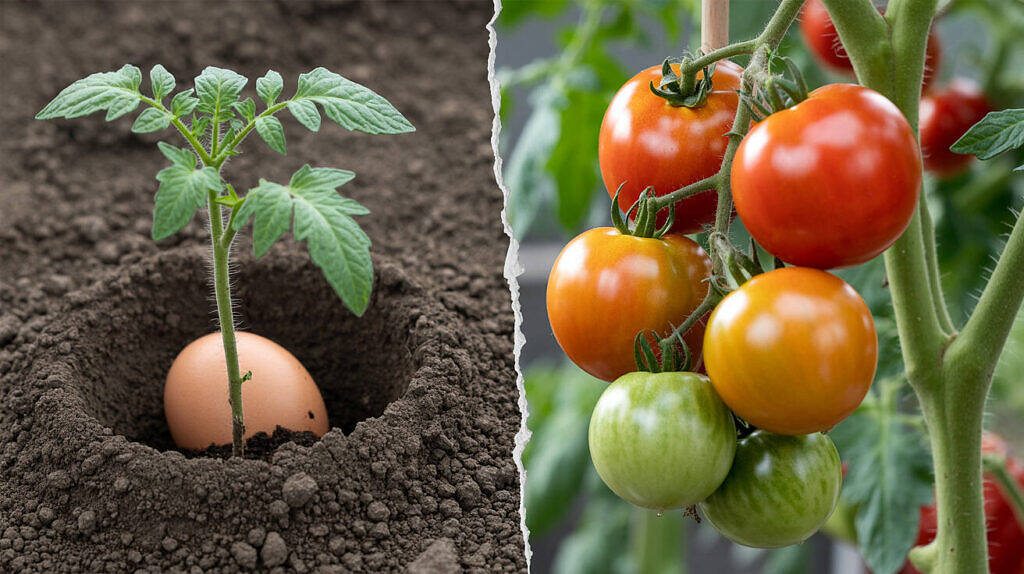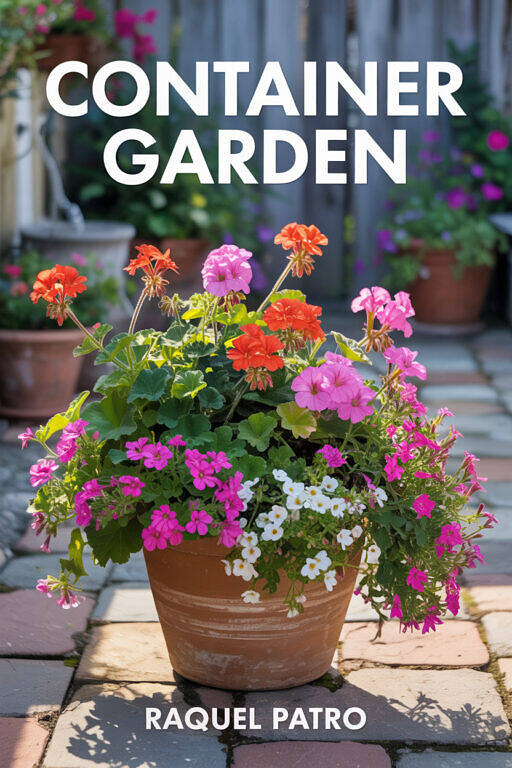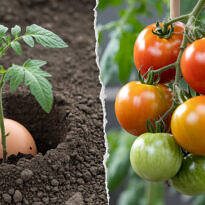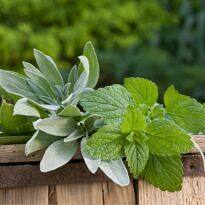What would you do to save your plants from aphids, slugs, or squirrels? Some gardeners are willing to do anything — and when we say anything, we mean it.
If you think gardening is just about organic fertilizer and morning watering, brace yourself for a dive into the insane side of the plant world! Inspired by a trend that has taken over Instagram in recent days, where several content creators asked their followers: “Give me your most unhinged garden hacks“, we collected hundreds of comments (over 650!) — some hilarious, others almost criminal — to put together this list.
Some examples that were left out (for obvious reasons):
- “planting seedlings by wasting raw eggs,
- “placing a raw chicken in the flower bed to attract energies”,
- “putting a sweaty underwear on the scarecrow”,
- “burying toxic ex-boyfriends in the garden” or perhaps:
- “using leftover placenta as fertilizer”.
Yes, real gardeners recommend this. But here, we’ve separated 20 bizarre, at least creative, and somewhat likely to work tricks. And don’t think it’s something already known, like offering beer to alcoholic slugs, get ready for unprecedented tips that you won’t find in gardening books and websites.
Get ready to laugh, be amazed, and perhaps adopt one or two tricks in your garden. Dare we go?
1. Morning urine as fertilizer and repellent
“Dilute 1 part human urine (preferably the first of the day) in 5 parts water and use to water your plants.”
“Ok. I used my urine on my tomato plants.“
“I let my son pee in the corners of my garden to keep raccoons and opossums away.“
“We collected our urine and poured it around the blackberries. It’s a super good fertilizer and helps keep deer away.“

- Test it yourself: Start with an ornamental or non-edible plant and observe the effects before applying to vegetables.
- Note from the gardener: Urine is rich in nitrogen and can boost plant growth. It also works as a natural repellent against deer, raccoons, and rabbits.
Avoid applying on plants that are already fruiting and always keep it on the soil, without wetting the leaves. Be careful, an excess of nitrogen can have the opposite effect, burning the plants. - What science says: Research confirms the efficacy of diluted urine as a fertilizer. However, continuous or excessive use can cause salt accumulation and burn the roots.
2. Conversations, threats, and care: the power of words in the garden
“I play classical music for my fruit trees while they are being harvested because I want them to feel relaxed.”
“I tell all my plants that I love them every morning, except one, to have something to compare.”
“If you threaten plants, they will grow faster.”

- Test it yourself: Choose a special plant and make it a habit to speak to it daily. Note any differences in growth and vigor over the weeks.
- Gardener’s note: Even without robust scientific confirmation, many gardeners report better results with affection, attention, and even humor directed at plants. Some even name their plants for more personalized care.
- What science says: There are indications that sound vibrations, including the human voice, can positively affect plant development, stimulating the production of growth hormones.
3. Dental pollination
“We use an electric toothbrush to help pollinate tomatoes and peppers.
The vibration mimics bee wings to help release pollen.

- Try it yourself: Place an electric toothbrush close to the open flowers of tomato or pepper plants during the morning, for a few seconds per flower.
- Gardener’s note: Ideal for urban gardens or balconies where the presence of natural pollinators is limited. The vibration helps to release the pollen which will then be available for fertilization.
- What science says: Mimicking the vibrations of bees, called “buzz pollination,” actually increases the fertilization rate in plants like tomatoes.
4. Bleach against mold in pumpkins
“Once, my mom was growing pumpkins, but our yard was shaded and they started to get mold. She made a diluted spray of bleach and water, sprayed the pumpkins, let it sit for 30 seconds, and then washed them with a hose. The mold disappeared, the grass was great, and the pumpkins were healthy and large.”

- Try it yourself: Make a solution with 1 part bleach to 10 parts water. Spray on the affected plant, wait half a minute and rinse thoroughly with clean water.
- Gardener’s note: Use carefully, as hypochlorite can burn leaves if not properly diluted. Ideal to apply in the early morning on cloudy days. Do not apply during the hottest parts of the day.
- What science says: Bleach can eliminate superficial fungi, such as powdery mildew, but its use should be occasional and always followed by abundant rinsing.
5. Beating for fruits
“I live on a farm, but I’m from the big city. In one of my first years here, my husband and his brothers were discussing a particular avocado tree that had never borne fruit, and the tree was about 10 years old. They decided to wait one more season before cutting it down. To be sure, they made lateral slices in the trunk (like claw marks)… the following season, the avocado tree produced HUNDREDS of avocados! They explained to me that the slices indicate potential mortality of the tree, so it reproduces (which means fruiting).”

- Try it yourself: If you have a stagnant adult tree, try making small superficial lateral cuts in the trunk (without deeply cutting into the bark).
- Note from the gardener: It may seem drastic, but small controlled injuries can activate survival and reproduction mechanisms in trees.
- What science says: This technique resembles ‘stress incision’, which can indeed stimulate fruiting in species that feel threatened by death.
6. Hair and fur against pests
“Wool around delicate plants. Slugs hate the texture! Believe me, I have tried eco-friendly slug pellets, eggshells, holly leaves, and beer traps, and none of them work as well as wool!”
“My mother was a hairdresser, so she would take my father’s hair, and he would spread it around the garden to keep deer away.”
“I collect hair from my hairbrush and place it in the soil of my garden because the scent deters deer.”
“We had problems with rabbits one year, so every time I cut my husband’s hair, I would spread it around the flower beds, and also made him ‘mark territory’ around the beds, ha! It worked! We haven’t had any problems with rabbits since then, even though they are everywhere!”
I trimmed my dog’s hair before washing her—I saved that dirty hair and spread it around my garden to keep animals away!

- Try it yourself: Spread human or animal hair around the most vulnerable plants to slugs, rabbits, or deer.
- Note from the gardener: The scent of predators (including humans) can keep animals at bay. Wool also physically acts as a barrier against slugs. However, your neighbors might think you have bodies buried in your garden. If it doesn’t work, at least you have a slow-release nitrogen source for your garden.
- What science says: There is empirical evidence that human and predatory animal hair (such as dogs and cats) act as an olfactory repellent to herbivores. Wool, on the other hand, is bothersome to mollusks.
7. Do or die: radical pruning
“The pruning of death. If a rose or bush isn’t thriving, prune it immediately, as it will either grow or die. Either way, the problem is solved.”

- Try it yourself: Apply to woody plants that are not blooming or growing, such as old rose bushes or weakened ornamental shrubs.
- Note from the gardener: The drastic technique can indeed stimulate a survival response. However, only use it if the plant is in a decadent state and has healthy roots.
- What science says: Severe pruning interrupts dormancies and activates latent buds. But if the plant is too debilitated, the shock may be fatal.
8. Spicy Pests
“If you have deer, rabbits, woodchucks, or squirrels eating your plants, spray them until damp and sprinkle cayenne pepper on top.”
“I buy cayenne pepper in bulk, cheaply, and spread it around my plants. None of those creeping insects seems to want to get close.”

- Try it yourself: After watering or spraying the plants, sprinkle cayenne pepper over the area. Repeat after heavy rains.
- Note from the gardener: The compound capsaicin in peppers irritates the smell and taste senses of animals and can be an excellent natural repellent. Use gloves when applying.
- What science says: Pepper-based repellents are proven effective against herbivores. However, they can irritate the eyes and mucous membranes of pets and humans.
9. Feeding the soil with alfalfa and corn
“I apply alfalfa pellets and cracked corn to the yard twice a year. I’ve turned a red clay soil with no fertile top layer into rich, black soil, 4 to 5 inches (10 to 13 cm) deep, in 5 years. At our next home, with poor, sandy, and silty soil, I did the same. Our trees, shrubs, other plants, and grass grew VERY fast. Feed the microorganisms, nature does the rest.“

- Test it yourself: Spread a mix of alfalfa pellets and ground corn into the soil twice a year and keep the soil covered with organic matter or vegetation.
- Note from the gardener: Besides nourishing the soil, these inputs activate microbial life and promote humus formation—especially useful in poor or compacted soils.
- What science says: Alfalfa is rich in nitrogen and corn provides energy for the microorganisms.
10. Warm tomatoes with old tires
“I live at 300 meters (984 feet) altitude and it’s not warm enough for good tomatoes, so I plant each tomato plant and then surround it with an old tire. Holds the heat! Wonderful tomatoes happen! Less weeds.”

- Test it yourself: Position an old tire around the base of the tomato plant, preferably painted black to increase heat retention.
- Note from the gardener: In cooler or high-altitude regions, this technique can advance and extend fruiting. It also reduces competition with weeds.
- What science says: The tire acts as a mini greenhouse and improves soil temperature. Be aware: avoid using cracked or decaying tires that may release toxic residues.
11. Realistic (and scary) scarecrows
“I placed rubber rattlesnakes in my garden to keep birds, cats, and squirrels away from the tomatoes and sunflowers. Occasionally, it even scared the delivery man. I am frightened all the time.”

- Try it yourself: Strategically distribute realistic replicas of snakes or visual predators around the garden. Change their locations frequently.
- Gardener’s note: The element of surprise is essential. Animals get used to “scarecrows” if they remain static for too long. Ideal for protecting sensitive seedlings and fruit.
- What science says: Studies show that visual stimuli of predators can reduce attacks by birds and small mammals, especially when they are mobile or interactive.
12. Menstrual Blood as Fertilizer
“Diluted menstrual blood is the best fertilizer. I add the blood from the menstrual cup to the water and water the plants right after.”

- Try it yourself: Dilute the contents of the menstrual cup in about half a gallon to three-quarters of a gallon (2 to 3 liters) of water and apply to the soil, preferably in pots or non-edible plants.
- Gardener’s note: This is a natural fertilizer rich in iron and nitrogen. Use with good judgment and only if you are comfortable with the practice. Avoid application on indoor plants as it may cause an unpleasant smell.
- What science says: Human blood contains nutrients beneficial for the soil, but it should be diluted to avoid overload. There are no risks if used in the soil and kept away from leaves and fruits.
13. Parents of Natural Predators
“I became a mother to over 100 praying mantises that I raised to kill pests in my gardens and properties.”
“I bought 1,500 ladybug nymphs on Amazon to eat the aphids on my corn plants.”
“I keep an active wasp nest in my garden because, for some reason, they only eat the green caterpillars that live on my broccoli.”

- Try it yourself: Release ladybugs, praying mantises, or green lacewings in your garden—especially if you’re dealing with aphids or caterpillars. And think twice before destroying any wasp nests.
- Gardener’s note: Predatory insects can control pests naturally and efficiently. Avoid pesticides, which kill both pests and beneficial allies.
- What science says: Biological control using beneficial insects is widely used in organic farming and has high efficacy when properly managed.
14. Uncomfortable Litter Box for Cats
“I planted plastic forks, tines up, between the seedlings to stop my cat from digging and pooping. It worked really well.”

- Try it yourself: Stick plastic forks into the soil with the tines facing up between the seedlings. You can also use sticks or short twigs.
- Gardener’s note: This visual and physical barrier discourages cats without harming them, protecting newly planted beds.
- What science says: Cats avoid uncomfortable surfaces for digging and walking. A safe and low-cost strategy.
15. Soured Milk: A Remedy for Plants
“Soured milk really helps plants. I diluted the spoiled milk in water and applied it to the plants, it eliminated bugs, mites, and molds.”

- Try it yourself: Dilute soured milk (1 part) in 9 parts of water. Apply on the leaves with a sprayer or water the soil.
- Note from the gardener: Ideal for powdery mildew and stimulating growth. Avoid excess, as too much milk can generate odors or attract animals.
- What the science says: Milk contains enzymes and proteins with antifungal properties, proven in the control of powdery mildew in various cultures.
16. Bananas as Fertilizers and Aphid Repellents
“Put a jar with water and banana peels in the fridge for a week, then pour this ‘tea’ around the plants attacked by aphids.”
“Soak banana peels in water. Water the plants with it. They love it.”

- Try it yourself: Store banana peels in a container with water for 5 to 7 days. Use the liquid for watering and bury the peels near the plant.
- Note from the gardener: In addition to repelling aphids, bananas release potassium and beneficial nutrients into the soil.
- What the science says: Although there are no specific studies on bananas against aphids, fermented organic matter can alter the microenvironment and reduce infestations.
17. Boiling Water: The Natural Herbicide
“I poured boiling water on a giant weed and it never came back.”
“I pour boiling water on hiding spots of pill bugs and slugs to kill them.”

- Try it yourself: Boil water and apply it directly on weeds or pest hideouts, being careful not to hit desired plants.
- Note from the gardener: A cheap, efficient, and chemical-free method, ideal for sidewalks and garden bed edges.
- What science says: Boiling water destroys plant tissues and organisms by cooking the living tissues. It has a quick effect, and is non-toxic, but may require reapplications.
18. Gas Station Scarecrow
“I use an inflatable mannequin with crazy arms (like a wacky waving inflatable arm flailing tube man) to keep squirrels away from the watermelons.”

- Try it yourself: Install an inflatable mannequin with constant motion near crops vulnerable to birds, deer, or rodents.
- Note from the gardener: It works especially well in open spaces, such as vegetable gardens or areas with watermelons, corn, and exposed fruit.
- What science says: Intense visual motion stimuli have proven efficacy as modern scarecrows. However, effectiveness decreases with repetition and adaptation by the animals.
19. Sacrificial row for hungry pests
“My father used to plant turnips around the garden — the hares preferred the turnip leaves to the lettuces.”
“I realized that the slugs in my area love broccoli and won’t touch my other plants if I have broccoli nearby, so every year I have a sacrificial broccoli plant to appease the slugs.”

- Try it yourself: Plant an outer row of something less desired by people (but attractive to animals) as live bait.
- Note from the gardener: The technique known as “sacrificial planting” works well to protect more sensitive or valuable crops.
- What science says: Rows of attractive plants divert pests from the principal plantation and reduce losses. Strategy recognized in agroecological farming.
20. The magic of diatomaceous earth
“I make a magic circle with diatomaceous earth around the garden, and I get rid of all insects.”
“I put diatomaceous earth on my indoor plants and quickly handle fungus gnats.”

- Try it yourself: Spread dry food-grade diatomaceous earth around the plants or over the soil, avoiding moisture.
- Note from the gardener: Diatomaceous earth acts as an abrasive against crawling insects. Apply with a mask and avoid breathing the dust. Do not apply on windy days.
- What science says: The compound, made from fossilized algae, destroys insects’ protective cuticle and causes dehydration. Safe for plants, but lethal for pests.
Not every gardening hack needs to come from a technical manual—sometimes, creativity (or desperation) is what saves a garden. When trying out these curious ideas, remember to respect your limits, test with common sense, and observe your plants’ responses. After all, the garden is also a space for expression, experimentation, and—why not?—a bit of healthy madness.
If you’ve tried something even more unusual, share it with us in the comments on our Instagram post (click here). Who knows, your unhinged garden hack might make it into the next list?
*Images are for illustrative purposes only and were created with Artificial Intelligence.







